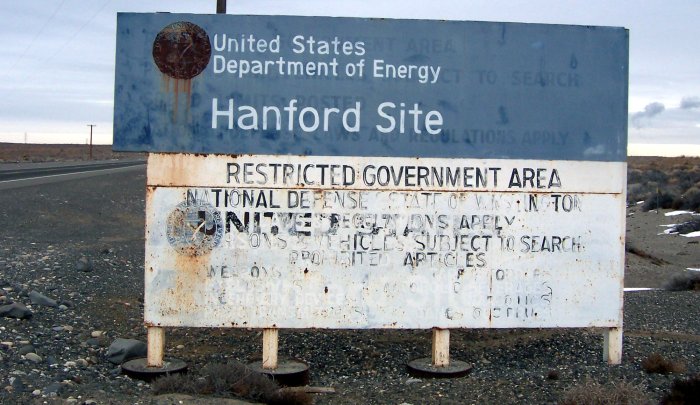A small group of my peers and I put together a presentation for high school students on the history of the Hanford site, who is affected and the cleanup options. We decided to present to four different classes in the Greater Seattle area. (two at Roosevelt High School in Seattle and two at Juanita High School in Kirkland.) Towards the end of the presentations we always included a call to action where we told the students, "You are in high school and that means you are approaching voting age. Now is the time where you need to start learning about issues going on in your country and in your state and deciding how you feel about them. You also need to find out how the people who speak for you, Senators and Representatives, feel about issues too." We made sure to give them the email and office addresses of Senators Patty Murray and Maria Cantwell and encouraged the students to get involved (part of which is pictured to the left).
Prior to our visits to the schools we had some preconceived notions about how effective our presentations would be with the short attention spans that many high school students seem to have. As we expected, not many of the students had any clue what Hanford was, but much to our surprise, we did not simply talk to rooms full of glassy eyed kids counting the seconds until lunch. When they realized how close Hanford is and how serious it is, most of the students seemed surprised and even outraged. That is exactly what we were looking for: passion. We were thrilled that students had questions or at points were even confused as to why cleanup had been neglected for so long and why government organizations were being dishonest about their intentions. These students are the future of Hanford and they care.
I would without a doubt call our visits to the local high schools a success. However, we are only a handful of informed college students and we only spread the word to a few classrooms full of students. Hopefully they will spread the word and do something with the passion that they seemed to be full of during class. But how can we reach more people? The contamination at Hanford will outlast you and me and even the students we reached. Future generations will inherit this problem and they need to know about how it will effect their planet and their people. How can we make sure that everyone knows and has an opinion about Hanford? Knowledge dies if it is not passed on and we need to make sure that Hanford's lethal legacy becomes a call to action and an inspiration for change.
Written by Stephanie Carson. Senior at the University of Washington studying Medical Anthropology and Global Health and Sociology, and Heart of America Northwest volunteer.


















